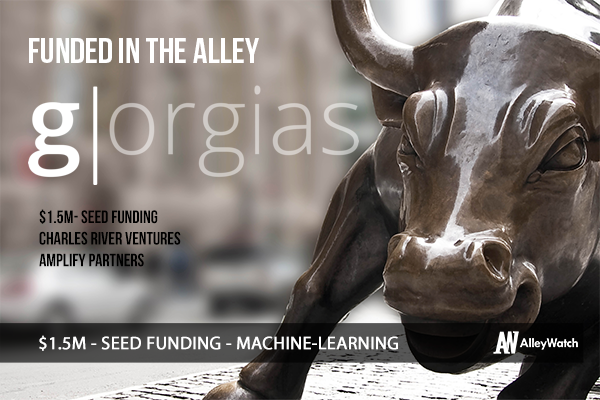As a generation we put a lot of trust in our tech, yet we are still a bit distrustful of how smart our smart technology really is (we’re talking about you – autocorrect). And like parenting, when we give more and more responsibility to machine-learning, we still feel the need to keep an eye out to making sure it doesn’t do anything wrong. Striking this balance provides efficiency without sacrificing quality and it is in this space where Gorgias is hitting the nail on the head. Their machine-learning enhanced help desk software provides automated solutions that a human can then approve with common tools such as Paypal or Salesforce. They have gained traction quickly and are looking to grow even more if it means saving you time.
Securing their second round, Gorgias cofounder & CEO Romain Lapeyre talks with AlleyWatch about their recent funding and how machine-learning is saving everyone time and money.
Who were your investors and how much did you raise?
We raised a $1.5M Seed round from Charles River Ventures and Amplify Partners.
Tell us about your product or service.
Gorgias is a help desk, which makes support agents 2x more efficient. It suggests how to solve each support request. This way, agents simply need to approve the suggestion to solve a case. We do this by combining machine learning and integrations with the tools the company already uses (Salesforce, Paypal, etc.).
We have 100 companies as customers in our beta, including Classpass, Kinnek, and Stripe.
How is it different?
Gorgias is different because it’s specifically geared towards e-commerce and on-demand businesses. Our goal is to help them scale their support as they grow.
When an agent responds to a support request, Gorgias brings all customer information in one place. It extracts it from Stripe, Shopify, UPS, etc. This way, agents don’t have to constantly switch between multiple tools.
Then, Gorgias uses machine learning to suggest how to respond to requests. Agents can select a canned response and trigger an action at the same time, like shipping a new package.
What market you are targeting and how big is it?
We’re targeting the customer support software market. According to Gartner, it’s $6B big.
What’s your business model?
We have a SaaS business model: we charge a monthly subscription based on the number of seats.
What inspired you to start the company?
My co-founder Alex and I were doing customer support, and we experienced how repetitive it can be. We decided to build a Chrome extension to address a very specific need: having easy to use templates to respond to repetitive emails in Gmail. Within a few months, we got thousands of users and a first customer — Kinnek (in NYC!), so we decided to start the company.
What was the funding process like?
Around Techstars NYC demo day, we started the funding process and connected with angels and VCs in NYC and on the East Coast. Early on in this process, we had the chance to meet with an experienced investor in B2B SaaS, Murat Bicer from Charles River Ventures, who was very excited about the product. He decided to lead the round. From there, the fundraising came together within a few weeks.
What are the biggest challenges that you faced while raising capital?
A large part of the fundraising process is about finding the right people to fund your startup. There are a lot of VCs and angels out there. You need to identify those who are interested in your space and share your approach to it, and then to convince them.
Techstars was specifically helpful here. We had the chance to meet great mentors during the program who helped us with business development, product, etc. When we started fundraising, they recommended potential investors to us. The first checks are the hardest, and Techstars’ network helped us a lot to get them.
What factors about your business led your investors to write the check?
We think customer support is going to change with recent progress in machine learning. Responses to basic requests will be automated and agents will focus on more complex issues. I think this aspect of our vision led us to get the first checks, along with the fact that investors liked our team.
What are the milestones you plan to achieve in the next six months?
We’re currently in private beta with our helpdesk. Our goal is to ensure success of our beta customers, so we can launch the public version in the summer.
What advice can you offer companies in New York that do not have a fresh injection of capital in the bank?
Don’t build the product too fast. Learn as much as you can about the problem first. If you can, go to customer’s office, work with them so you experience the problem yourself as much as possible. Then, you’ll have a much better idea of what people want.
Where do you see the company going now over the near term?
As of now, we’re focusing on growing the team and building the helpdesk product. The next steps will be to add channels to our helpdesk (WhatsApp, Twitter, chat), and build more integrations (with analytics platform, e-commerce websites, etc.).
Where is your favorite bar in the city for an after work drink?
We like The Greek on Greenwich, they have good drinks and a relaxing atmosphere after a long week of work!




